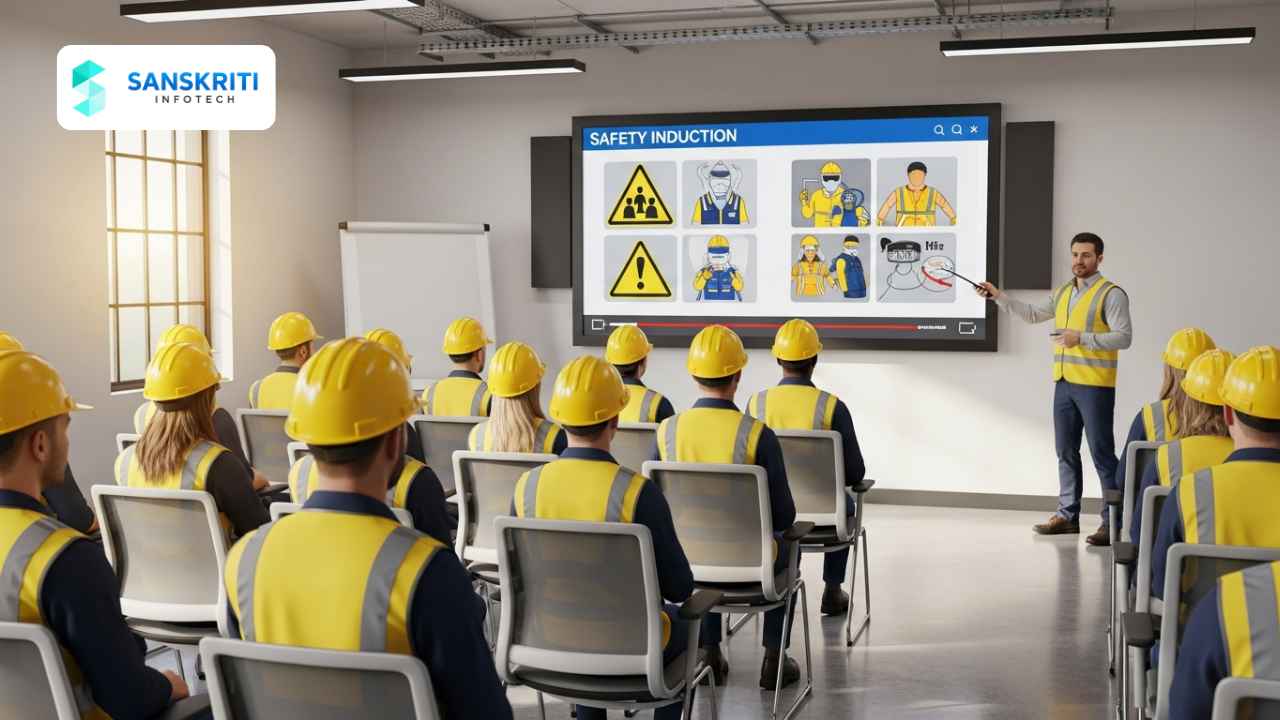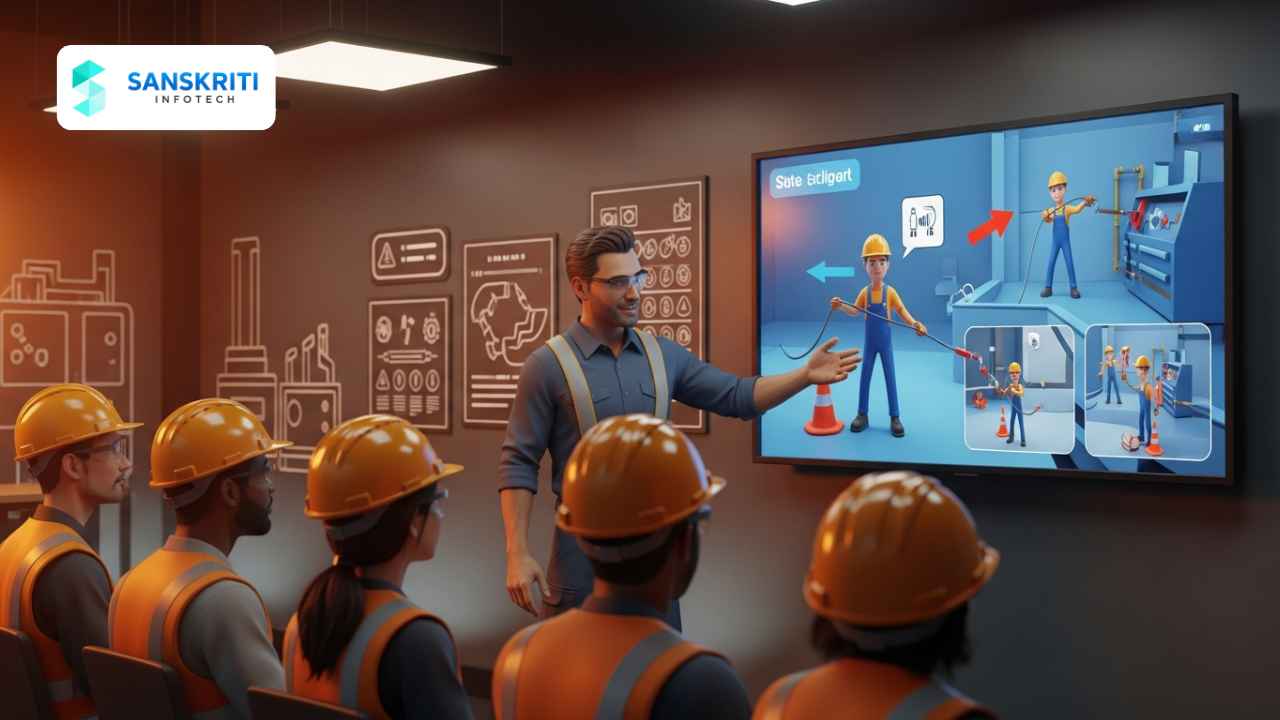Table of Contents
Introduction
A well-structured safety induction program is the foundation of a safe and compliant workplace. For new employees, the induction phase is their first exposure to company safety standards, protocols, and culture. Organizations that invest in high-quality induction not only reduce incidents but also build stronger safety ownership across departments. In this blog, we’ll explore how to create an effective safety induction program, the role of 3D animation in simplifying complex topics, and how Sanskriti Infotech supports organizations in achieving world-class onboarding experiences. For global safety management strategies, visit the OSHA Safety Management resource.
1. Why Safety Induction Matters
Safety induction is not just a formality—it’s a legal and moral obligation. New employees often enter the workplace unaware of site-specific hazards, emergency procedures, or safe work practices. An effective induction program ensures they understand potential risks and how to mitigate them. This reduces incident rates, builds confidence, and fosters a proactive safety culture from day one.
2. Key Components of a Strong Safety Induction Program
Every induction should cover the following critical topics:
- Company safety policy and leadership commitment
- Emergency procedures and evacuation routes
- Personal Protective Equipment (PPE) requirements
- Reporting hazards, incidents, and near-misses
- First aid and emergency contact information
- Safe work practices and permit-to-work systems
- Visitor and contractor guidelines
3. Using 3D Animation for Better Induction Training
Traditional induction formats—like PowerPoints or lectures—often fail to hold attention. 3D animated safety induction videos transform static information into immersive, visual storytelling. Employees can ‘see’ hazardous scenarios, understand safe practices, and remember critical steps more effectively. Sanskriti Infotech creates customized safety induction videos that are site-specific, multilingual, and engaging, helping industries achieve faster comprehension and higher compliance rates.
4. How to Develop an Engaging Safety Induction Program
- Assess the unique safety needs of your facility or project site.
- Map your induction flow—from company overview to department-specific hazards.
- Develop scripts that focus on real-world risks and preventive actions.
- Use animated visuals to illustrate correct versus incorrect practices.
- Incorporate assessments and feedback forms to measure understanding.
- Update your content regularly to align with new regulations and procedures.
5. Common Mistakes to Avoid
- Using generic induction videos that don’t reflect site-specific hazards.
- Overloading new employees with too much information at once.
- Neglecting to verify comprehension through quizzes or practical sessions.
- Failing to refresh induction materials regularly.
- Ignoring cultural or language barriers in multinational workforces.
6. Measuring the Effectiveness of Safety Induction
Tracking the success of your induction program is essential. Measure performance through post-training assessments, incident trend analysis, and employee feedback. A drop in near-miss frequency or onboarding time is a clear indicator of an effective induction. Sanskriti Infotech’s digital analytics dashboards can help visualize training effectiveness and learner engagement in real-time.
7. Why Choose Sanskriti Infotech for Safety Induction Solutions
Sanskriti Infotech specializes in creating custom 3D animated safety induction videos for diverse industries, including oil & gas, construction, manufacturing, and pharmaceuticals. Our expertise lies in combining technical accuracy with creative storytelling, ensuring each induction program aligns with your organization’s safety objectives and compliance needs. We help companies simplify complex procedures, enhance retention, and standardize safety culture across global operations. For additional guidance on effective inductions, see HSE UK Managing Introductions.
Conclusion
Effective safety inductions are the bedrock of a safe workplace and essential for compliance with ISO 45001 and other safety standards. By integrating immersive 3D animations and tailored content, organizations can ensure new workers are confident, qualified, and safety-aware from their first day. Stay updated on safety culture improvements at NIOSH Safety Culture.
Ready to elevate your safety induction process? Contact us to start creating impactful, custom safety induction training videos.





